Small space gardening can present unique challenges, but with the use of raised beds, you can transform your garden into a thriving oasis. Raised beds offer numerous benefits for small space gardening, allowing you to maximize your available space and create an efficient, productive garden. By understanding the principles of raised bed gardening and implementing thoughtful design and planting strategies, you can achieve remarkable results even in limited areas.
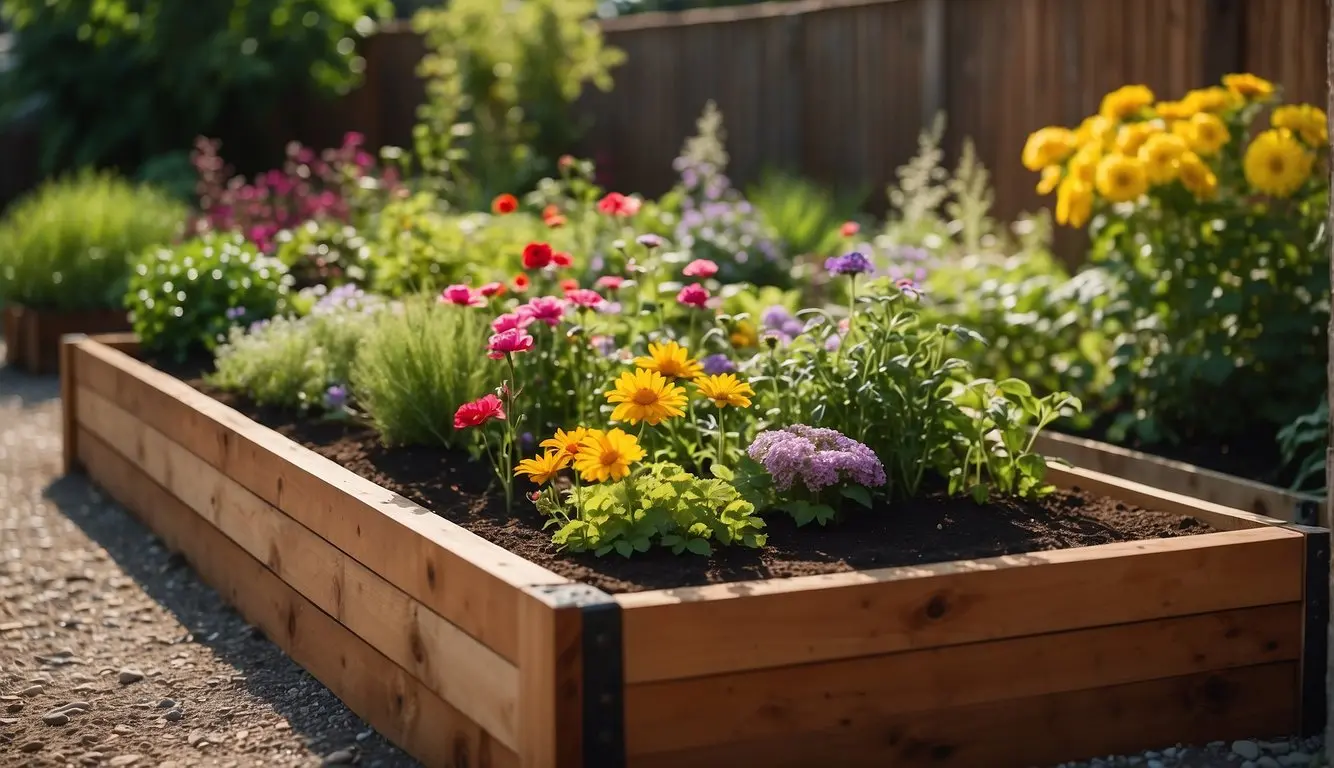
Raised beds provide an effective solution for small space gardening, enabling you to optimize your garden layout and make the most of available space. With the right approach to soil, compost, and plant selection, you can create a vibrant and bountiful garden, regardless of space constraints. Embracing raised bed gardening opens up a world of possibilities, allowing you to cultivate a diverse range of plants and adapt your garden to suit your specific needs and preferences.
Key Takeaways
- Raised beds offer an efficient solution for maximizing small space gardens.
- Understanding raised bed gardening principles can lead to a productive and vibrant garden.
- With thoughtful design and planting strategies, you can achieve remarkable results in limited areas.
Table of Contents
Understanding Small Space Gardening
If you’re looking to grow a garden in a small space, raised bed gardening is a great option. Raised beds are essentially garden beds that are elevated above the ground. They can be made from a variety of materials, such as wood, concrete blocks, or even recycled materials like old tires or pallets.
Benefits of Raised Beds
One of the biggest benefits of raised bed gardening is improved drainage. Since the garden bed is elevated, excess water can easily drain away, preventing waterlogged soil and root rot. Additionally, raised beds allow you to control the quality of your soil. You can fill them with a high-quality soil mixture that is tailored to the needs of your plants. This is especially important if you’re gardening in an area with poor soil quality.
Raised beds also provide better access to your plants, making it easier to tend to them. You won’t have to bend over as much, which can be especially helpful for those with back problems. They’re also a great option if you’re looking to garden in a location with poor soil or limited space.
Choosing the Right Location
When choosing a location for your raised bed garden, there are a few things to consider. First and foremost, you’ll want to choose a location that gets plenty of sunlight. Most plants require at least six hours of direct sunlight per day, so make sure your garden bed is located in a spot that gets plenty of sun.
You’ll also want to consider the proximity to a water source. Since raised beds drain more quickly than traditional garden beds, you’ll need to water them more frequently. Make sure your garden bed is located near a water source so you can easily water your plants.
Finally, consider the overall layout of your garden. Raised beds can be arranged in a variety of configurations, so think about how you want your garden to look and how you want to access your plants. You may also want to consider adding pathways between your raised beds to make it easier to navigate your garden.
Designing Your Raised Garden Bed
If you’re looking to transform your small garden space, raised garden beds are a great option. They not only add visual interest to your garden but also provide a practical solution for growing plants in limited space. In this section, we’ll go over some important considerations when designing your raised garden bed.
Selecting Materials
When it comes to selecting materials for your raised garden bed, there are several options to choose from. Wood, concrete, metal, and stone are all popular choices. Wood, especially cedar, is a popular choice because it is affordable, easy to work with, and naturally resistant to rot and insects. Concrete and metal are more durable and long-lasting, but can be more expensive. Stone is a beautiful and natural option, but can also be costly. Consider your budget and desired aesthetic when selecting materials.
Determining Size and Shape
The size and shape of your raised garden bed will depend on the available space in your garden and the types of plants you want to grow. If you have limited space, a rectangular or square shape may be best. The length, depth, and width of your raised bed will also depend on the types of plants you want to grow. For example, root vegetables like carrots and potatoes require deeper soil, while shallow-rooted plants like lettuce and herbs can thrive in a shallower bed.
Building or Buying Your Raised Bed
You can either build your own raised garden bed or purchase a pre-made one. If you choose to build your own, make sure to include drainage holes to prevent water from pooling in the bottom of the bed. If you’re using wood, consider using untreated lumber or lining the bed with a plastic liner to prevent chemicals from leaching into the soil. Other materials like tires, pallets, and bricks can also be repurposed to create a unique raised bed.
Overall, designing your raised garden bed requires careful consideration of materials, size, and shape. By taking the time to plan and design your raised bed, you can create a beautiful and productive garden space in even the smallest of areas.
Soil and Compost for Healthy Growth
Raised beds are an excellent way to grow plants in small spaces. However, the success of your garden depends on the soil and compost you use. In this section, we’ll discuss how to create the perfect soil mix and the benefits of composting.
Creating the Perfect Soil Mix
The key to a successful raised bed garden is the soil mix. You want a mix that is well-draining, nutrient-rich, and holds moisture. A good soil mix should consist of topsoil, compost or organic matter, and sand or grit.
To create the perfect soil mix, start by adding a layer of organic matter to the bottom of the bed. This can be in the form of leaves, grass clippings, or straw. Next, add a layer of topsoil, followed by a layer of compost. Repeat this process until you reach the top of the bed. Finally, add a layer of sand or grit to improve drainage.
Benefits of Composting
Composting is an essential part of any garden, especially a raised bed garden. Compost is rich in nutrients and organic matter, which are essential for healthy plant growth. It also improves soil structure, making it easier for roots to grow and absorb nutrients.
To make your own compost, start by collecting organic matter such as vegetable scraps, leaves, and grass clippings. Add these to a compost bin or pile, along with some soil and water. Turn the compost regularly to aerate it and speed up the decomposition process. In a few months, you’ll have rich, nutrient-dense compost that you can add to your raised bed garden.
In addition to compost, you can also use mulch or straw to improve soil health. Mulch helps to retain moisture in the soil, suppress weeds, and regulate soil temperature. Straw, on the other hand, is an excellent option for vegetable gardens as it helps to keep the soil warm and moist.
In conclusion, creating the perfect soil mix and composting are essential for a successful raised bed garden. By following these tips, you’ll be on your way to growing healthy, thriving plants in even the smallest of spaces.
Planting Strategies in Raised Beds
Raised beds are a great way to maximize space in your small garden. With a little bit of planning, you can grow a variety of vegetables, herbs, and flowers in a small area. Here are a few planting strategies to help you get the most out of your raised beds.
Maximizing Space with Square Foot Gardening
Square foot gardening is a technique that allows you to grow a variety of plants in a small space. The idea is to divide your raised bed into square foot sections and plant a different crop in each section. This helps you maximize the space in your garden and ensures that you’re making the most of every inch.
To get started with square foot gardening, you’ll need to determine the size of your raised bed. Once you know the dimensions, you can divide the bed into equal sections. For example, if your raised bed is 4 feet by 4 feet, you can divide it into 16 square foot sections.
Next, you’ll need to decide which plants you want to grow. Some plants, like tomatoes and peppers, require more space than others. You can use a square foot gardening chart to determine how many plants you can fit in each section.
Succession Planting for Continuous Harvest
Succession planting is a technique that allows you to plant crops at different times throughout the growing season. This ensures that you have a continuous harvest and can enjoy fresh vegetables all season long.
To get started with succession planting, you’ll need to determine which crops you want to grow and when they should be planted. For example, you can plant cool-season crops like lettuce and spinach in the spring, followed by warm-season crops like tomatoes and peppers in the summer.
As you harvest your crops, you can replant the same section with a new crop. This ensures that you’re making the most of your space and that you have a continuous supply of fresh vegetables.
Companion Planting Benefits
Companion planting is a technique that involves planting different crops together to benefit each other. For example, you can plant marigolds with your tomatoes to repel pests and attract beneficial insects.
To get started with companion planting, you’ll need to determine which crops work well together. Some plants, like beans and peas, can fix nitrogen in the soil, which benefits other plants. Other plants, like basil and tomatoes, can improve each other’s flavor.
By using these planting strategies in your raised beds, you can maximize your space and enjoy a bountiful harvest all season long.
Caring for Your Raised Bed Garden
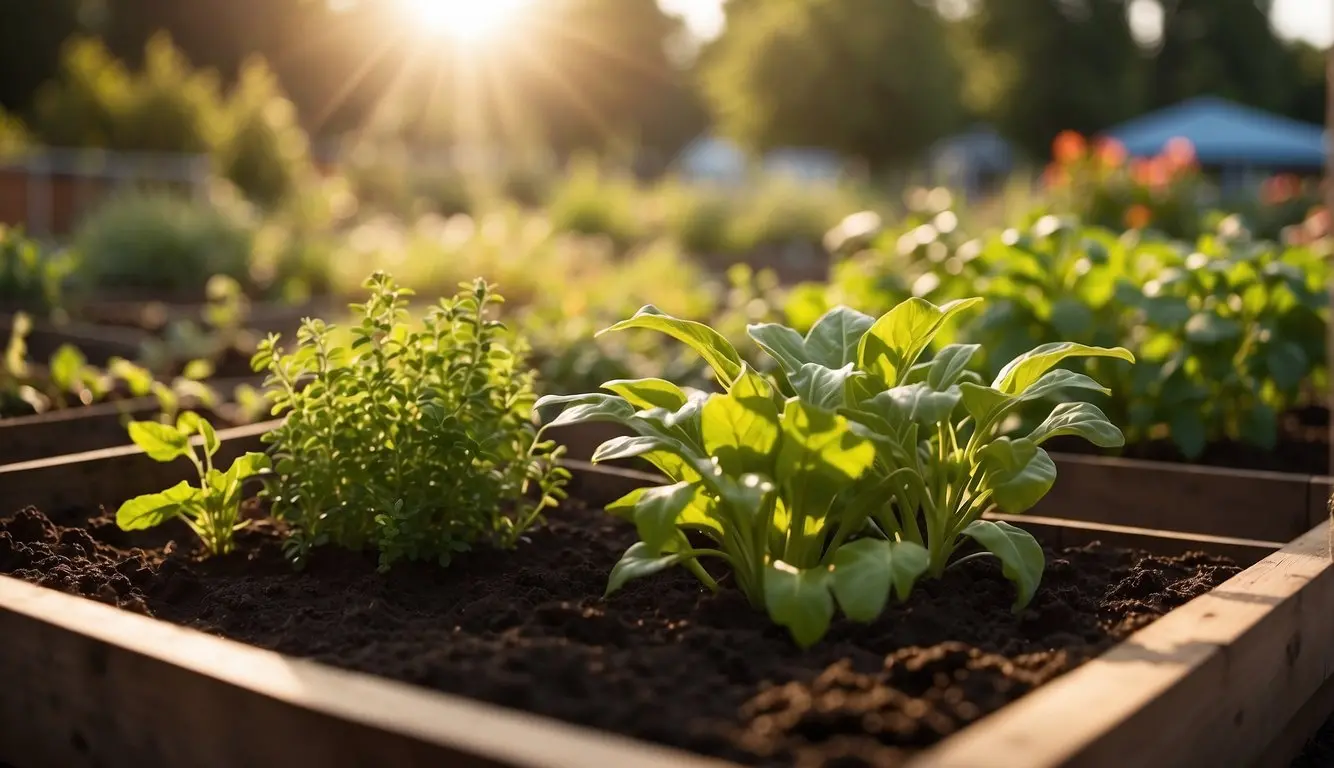
Raised bed gardens are a great way to grow vegetables and flowers in small spaces. They offer better soil structure and drainage, allowing the soil to warm up earlier in the season and giving you a head start on spring. Caring for your raised bed garden is essential to ensure a bountiful harvest. Here are some tips to help you maintain your raised bed garden.
Watering Techniques
Water is essential for plant growth, and raised bed gardens require more water than traditional gardens. The soil in raised beds dries out faster than in-ground beds, so it’s important to water your garden frequently. Water your raised bed garden deeply, so the water reaches the roots of your plants. You can use a watering can or a hose with a nozzle that has a gentle spray. Avoid watering too much, as this can lead to root rot and other problems.
Managing Weeds and Pests
Weeds and pests can be a problem in any garden, and raised bed gardens are no exception. To manage weeds, use mulch to suppress their growth. Mulch also helps to retain moisture in the soil. You can use organic mulch, such as straw or leaves, or inorganic mulch, such as black plastic. To manage pests, use natural methods, such as companion planting and crop rotation. You can also use organic pesticides, such as neem oil, to control pests.
Seasonal Maintenance
Seasonal maintenance is essential to keep your raised bed garden healthy and productive. In the spring, add compost to your raised bed garden to improve soil fertility. You can also add organic fertilizers, such as fish emulsion or bone meal. In the summer, monitor your garden for signs of stress, such as wilting or yellowing leaves. Water your garden more frequently during hot weather. In the fall, remove any dead plants and add a layer of compost or mulch to protect the soil during the winter.
By following these tips, you can keep your raised bed garden healthy and productive. With proper care, your raised bed garden can provide you with fresh vegetables and flowers throughout the growing season.
Expanding Your Garden Vertically
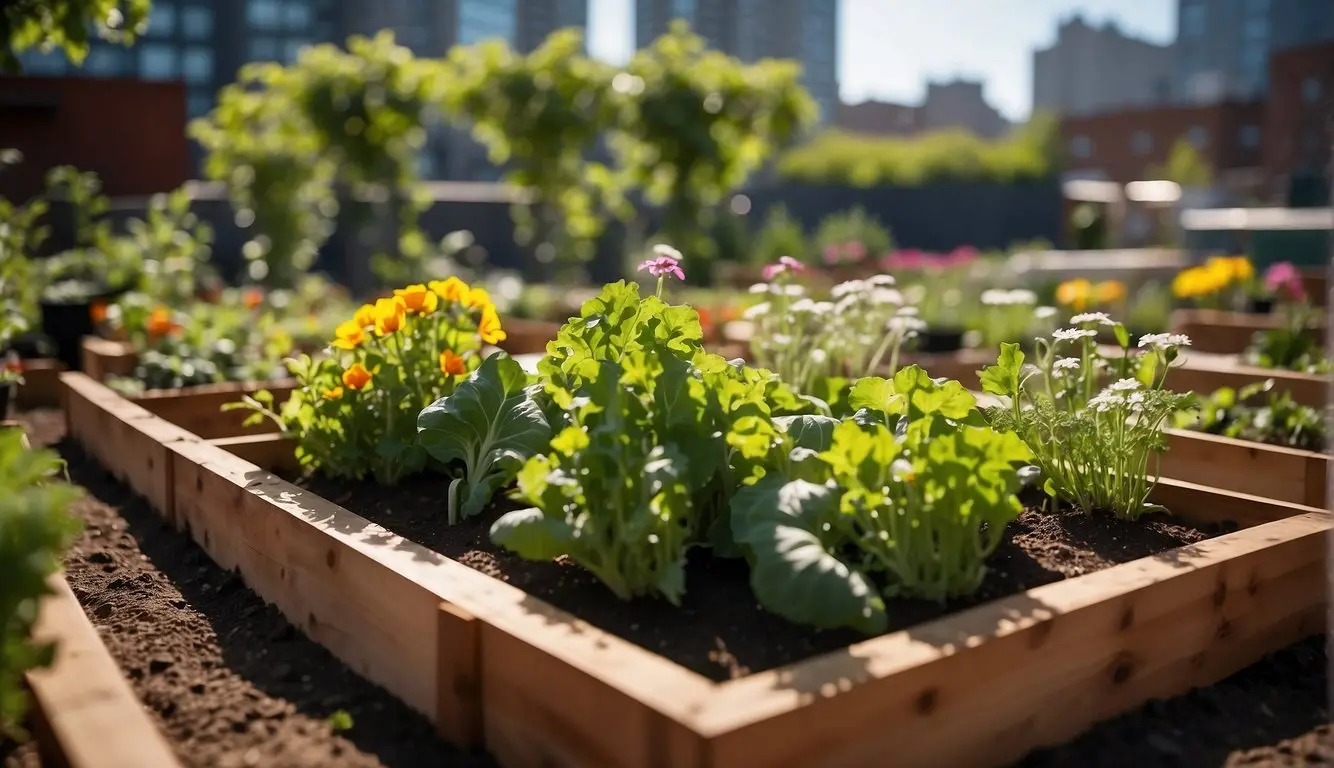
If you have limited space in your garden, vertical gardening is an excellent way to maximize your growing area. One of the most popular ways to grow vertically is by incorporating trellises and arbors into your raised beds.
Incorporating Trellises and Arbors
Trellises are an easy and space-saving method for growing vining plants like cucumbers, beans, and peas. You can attach them to the sides of your raised beds or create a freestanding structure. Arbors are another option for vertical gardening that can add a beautiful focal point to your garden while providing support for climbing plants.
When incorporating trellises or arbors, make sure to choose sturdy materials that can withstand the weight of your plants. Wood, metal, and PVC are popular choices, but make sure to research which materials are best suited for your specific needs.
Advantages of Vertical Gardening
Vertical gardening has many advantages beyond just saving space. By growing vertically, you can increase air circulation around your plants, which can help prevent diseases and pests. It also allows for easier harvesting and maintenance since your plants are at eye level.
Another advantage of vertical gardening is that it can increase your yield. When you grow vertically, you can plant more in a smaller area, which means you can grow more vegetables or fruits in the same space as a traditional garden bed.
In conclusion, incorporating trellises and arbors into your raised beds can transform your garden by expanding your growing area and increasing your yield. Vertical gardening has many advantages, including better air circulation, easier maintenance, and higher yields. So why not give it a try and see how it can transform your small space garden?
Growing a Variety of Plants
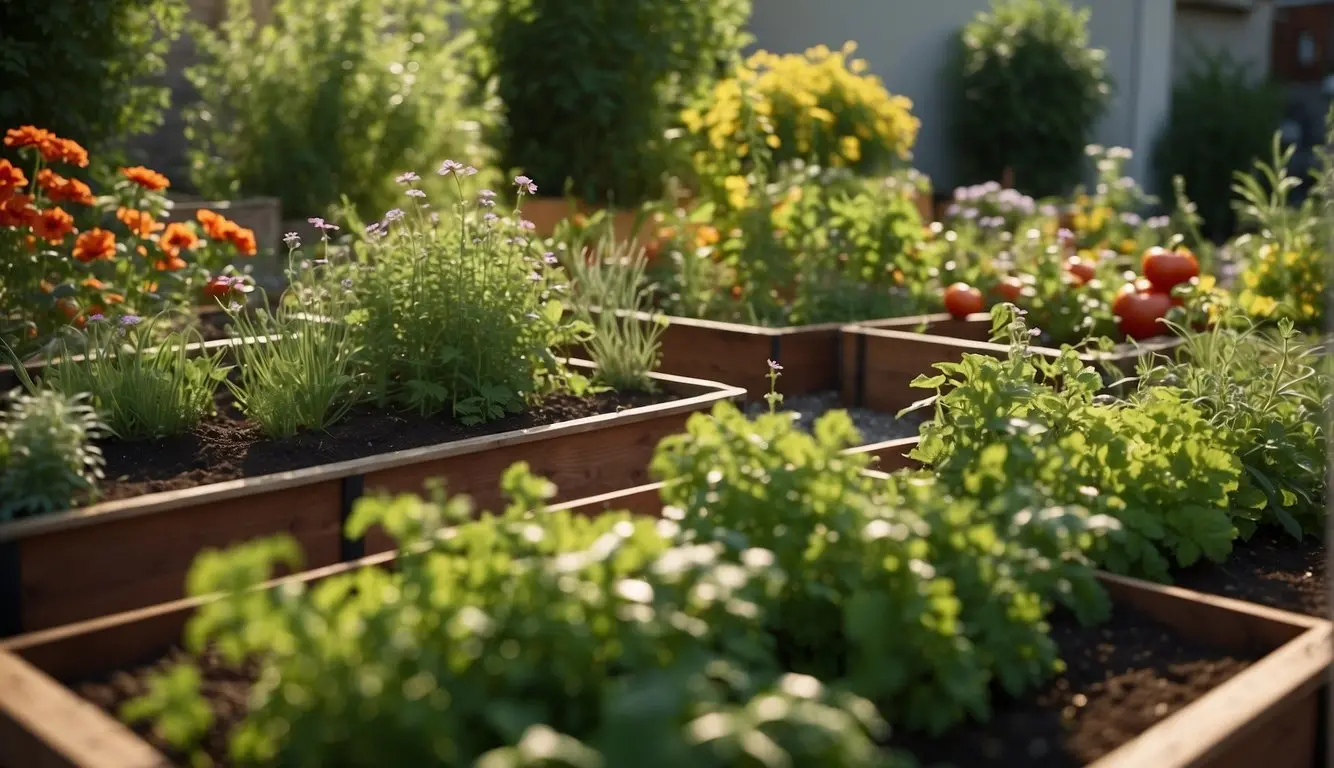
Raised beds are versatile and can accommodate a variety of plants, making them ideal for small space gardening. Here are some of the plants that you can grow in your raised bed garden.
Vegetables and Fruits
You can grow a variety of vegetables and fruits in raised beds. Tomatoes, lettuce, carrots, peppers, and peas are some of the vegetables that grow well in raised beds. Berries, such as strawberries, can also be grown in raised beds. In fact, strawberries grow exceptionally well in raised beds as they are less prone to rotting.
Herbs and Leafy Greens
Herbs and leafy greens are great for small space gardening as they can be grown in small containers or pots. However, they can also be grown in raised beds. Basil, spinach, and lettuce are some of the herbs and leafy greens that grow well in raised beds. Raised beds can also provide the ideal growing conditions for herbs, such as rosemary and thyme.
Flowers and Decorative Plants
Raised beds can also be used to grow flowers and decorative plants. Marigolds, for example, can be grown in raised beds to add color and beauty to your garden. Raised beds can also be used to grow plants, such as cabbage and potatoes, which can add texture and depth to your garden.
In summary, raised beds can accommodate a variety of plants, providing an ideal growing environment for vegetables, fruits, herbs, leafy greens, flowers, and decorative plants. By using raised beds for your small space gardening, you can enjoy a bountiful harvest of fresh produce and beautiful flowers.
Adapting Raised Beds to Small Spaces
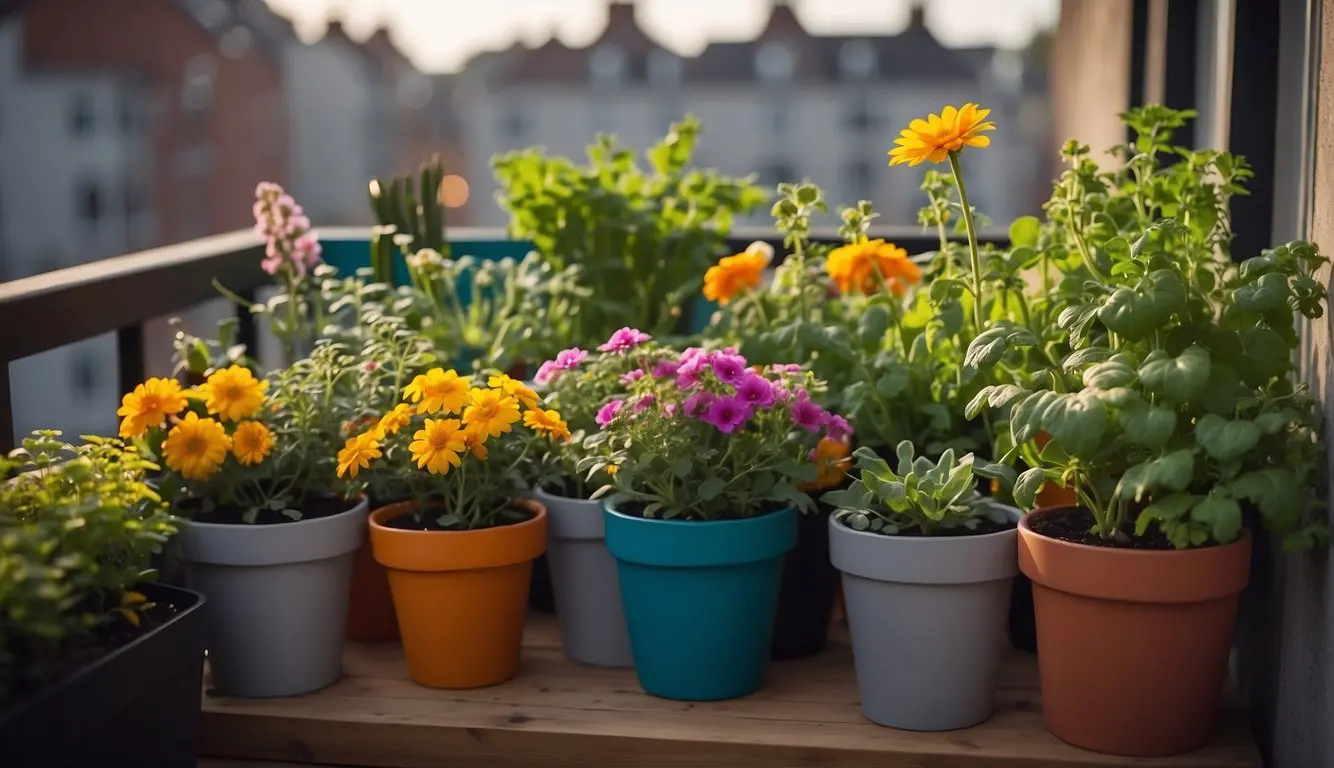
If you’re looking to grow your own vegetables, fruits, or flowers in a small space, raised beds are a great option. They allow you to maximize your growing area and can be adapted to fit almost any space. Here are some tips for adapting raised beds to small spaces.
Balcony and Patio Gardening
If you have a small balcony or patio, you can still grow a variety of plants in raised beds. The key is to choose plants that are well-suited to container gardening, such as herbs, lettuces, and small fruits like strawberries. You can also use grow bags, which are lightweight and easy to move around.
When choosing a raised bed for your balcony or patio, make sure it’s the right size for your space. You don’t want it to take up too much room and make it difficult to move around. Consider a smaller, square-shaped bed that can fit in a corner or against a wall.
Creative Solutions for Limited Space
If you have limited space, there are still creative ways to incorporate raised beds into your garden. Consider using vertical space, such as walls or fences, to hang smaller raised beds or planters. You can also stack raised beds on top of each other to create a tiered garden.
Another option is to use raised beds as a border around your garden or patio. This not only adds visual interest, but it also creates more growing space. You can also use raised beds to create defined areas within your garden, such as a vegetable garden or a flower garden.
No matter what type of small space you have, there’s a raised bed solution that will work for you. With a little creativity and some careful planning, you can transform your small garden into a productive and beautiful space.
Conclusion

In conclusion, raised beds are a great solution for small space gardening. They allow you to maximize your garden space and increase productivity by providing optimal growing conditions for your plants. With a little planning and preparation, you can easily build a raised bed and start growing your own fresh produce.
When planning your raised bed, consider the size and location of your space, as well as the types of plants you want to grow. Choose materials that are durable and long-lasting, such as cedar or redwood, and make sure the bed is at least 12 inches deep to provide adequate root space.
Once your raised bed is built, fill it with nutrient-rich soil and choose plants that are well-suited to your specific growing conditions. Consider companion planting to maximize space and deter pests, and make sure to water and fertilize your plants regularly.
Overall, raised beds are a simple and effective way to transform your small space garden into a thriving oasis of fresh produce. So why not give them a try and see the difference they can make in your gardening experience?
Frequently Asked Questions
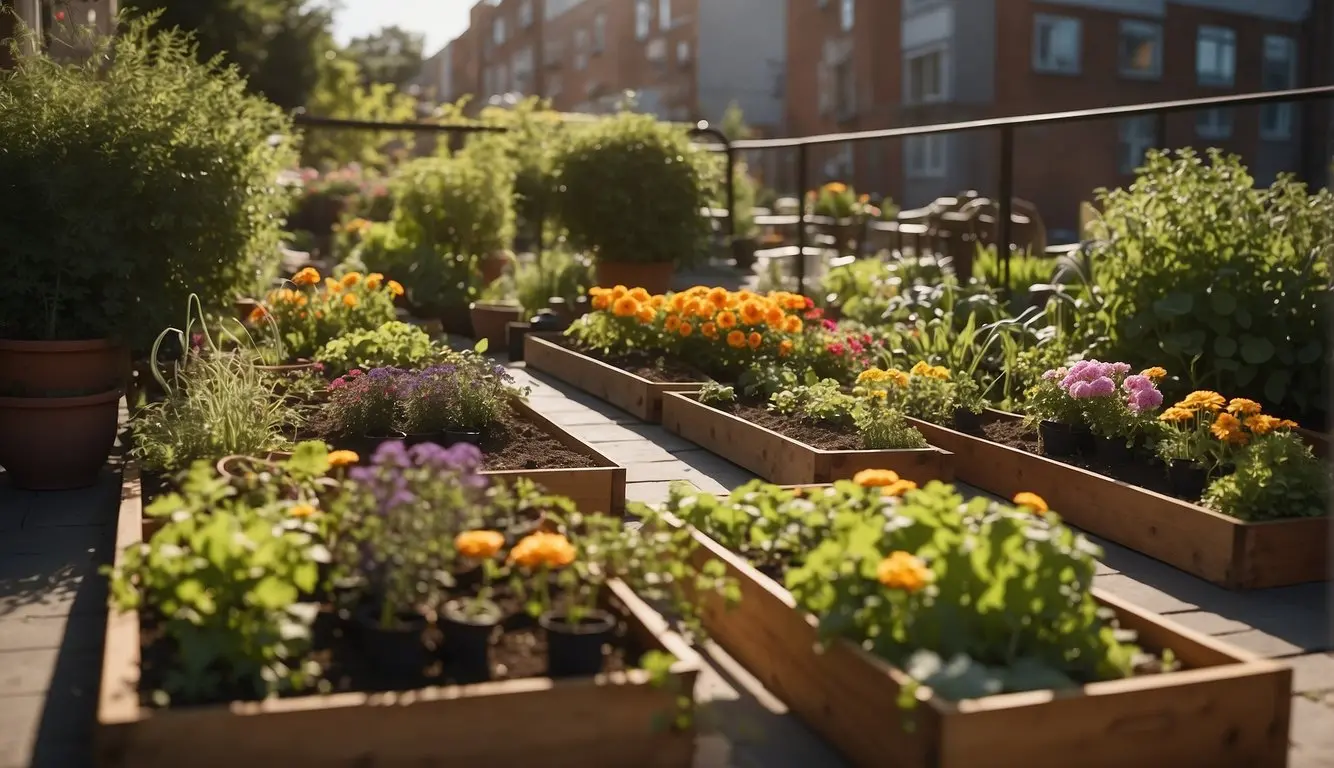
What are cost-effective materials to use for building raised garden beds?
When building a raised garden bed, you want to use materials that are cost-effective and durable. Some popular options include using untreated lumber, concrete blocks, or recycled plastic. You can also use items you may already have on hand, such as old pallets or tires. Keep in mind that while some materials may be cheaper upfront, they may not last as long or be as safe for growing food.
Can you provide examples of efficient raised bed garden layouts?
There are many efficient raised bed garden layouts to choose from, depending on the size and shape of your garden space. Some popular layouts include the square foot garden, keyhole garden, and the mandala garden. The square foot garden is a simple layout that divides the garden bed into square foot sections, while the keyhole garden has a circular shape with a keyhole-shaped path in the center for easy access. The mandala garden is a circular design with a central focal point and radiating beds.
How can I maximize vegetable yield in a small raised garden bed?
To maximize vegetable yield in a small raised garden bed, it’s important to choose the right plants and use proper planting techniques. Select plants that are well-suited for small spaces, such as bush varieties of tomatoes or cucumbers. Use companion planting to help plants grow better together, such as planting basil next to tomatoes. Also, consider using trellises or vertical gardening techniques to save space and increase yield.
What are some creative DIY raised garden bed designs?
There are many creative DIY raised garden bed designs to choose from, depending on your style and budget. Some popular designs include using old wine barrels, repurposed dresser drawers, or even cinder blocks. You can also get creative with the shape and size of your raised garden bed, such as building a hexagonal or triangular-shaped bed.
What are the benefits of incorporating raised flower beds in front yard landscaping?
Incorporating raised flower beds in front yard landscaping can add curb appeal and increase the value of your home. Raised flower beds can also help to define garden spaces and add visual interest to your yard. Additionally, raised flower beds can be easier to maintain and provide better drainage for your plants.
Are raised garden beds considered a temporary or permanent addition to a garden?
Raised garden beds can be either a temporary or permanent addition to a garden, depending on how they are constructed. If you use untreated lumber or other materials that will break down over time, you may need to replace the bed after a few years. However, if you use durable materials such as concrete blocks or galvanized steel panels, your raised garden bed can last for many years and be a permanent addition to your garden.
- Best Brush Cutter: Top 5 Models for Lawn Maintenance in 2024 - January 10, 2024
- Protecting Your Garden from Rodent Damage: Tips and Tricks - December 14, 2023
- Small Space Gardening: Transform Your Garden with Raised Beds - December 10, 2023
